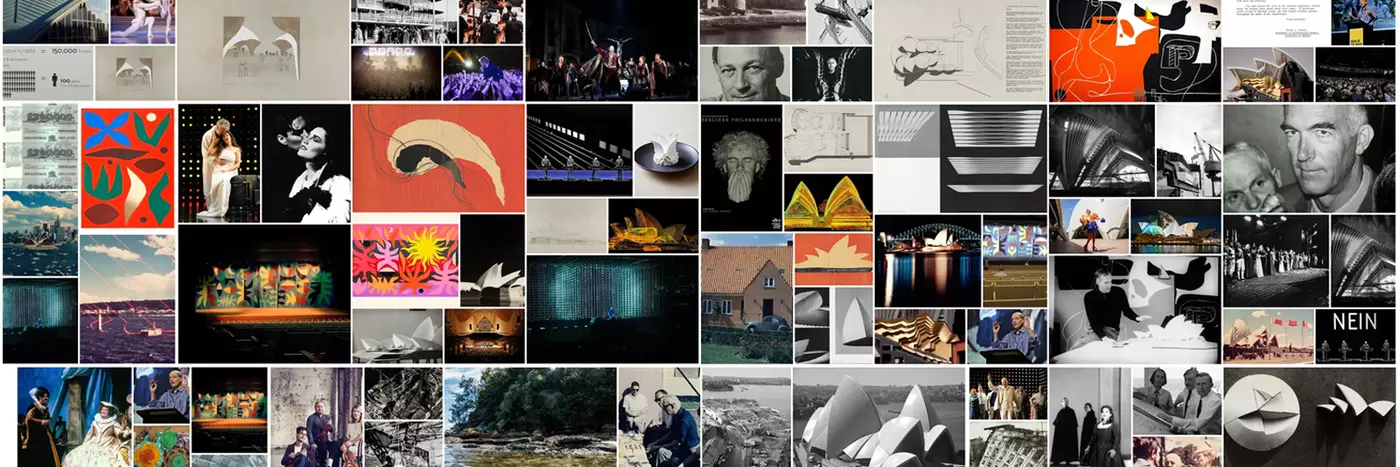House of Wonder
Sam Doust, Google Arts & Culture curator, reveals his favourite stories from behind the curtain
As curator of over 50 Sydney Opera House exhibits on Google Arts & Culture, I’ve come to know the House and the people behind it from every angle.
Wonder is the one word that comes close to capturing the feeling of Sydney Opera House: a building that has become so synonymous with inspiration and creativity.
At the heart of this wonder is the recurring notion that the building is itself a work of art, built for the performance of works of art.
Go deeper into the story of the Opera House and you will discover astounding tales of a world heritage listed masterpiece, featuring tragedy and hope, innovation and excellence, and a pursuit to make physical and permanent the essence of the creative spirit.
So in this time of virtual visits and vicarious experiences, I wanted to share with you some of my favourite ways in and give you a glimpse behind the curtain.
Seeing the construction of Sydney Opera House through Utzon's eyes is a fascinating view on the details of design and construction. Jørn Utzon's photographs have a wonderfully informal style that documents his view on the work. In many of the images, a fascinating moment can be discovered in the details. For instance, note the wheelbarrow parked in the cleavage of the building, between the two theatres!
Not a year after this photograph was taken, Utzon withdrew from the project and left Australia never to return, compounding the poignancy of this wonderful record.
Peter Hall took on a nearly insurmountable job as design architect in Utzon’s wake. Caught between the enmity of pro-Utzon supporters and the changing requirements of the Liberal NSW Government and the ABC, Hall alongside project architects, David Littlemore and Lionel Todd, rose to the occasion in his own remarkable right. This exhibit gives some insight into the difficulty of the task Hall accepted, and the tragic consequences on his personal and professional life.
This is one of my favourite exhibits. Ove Arup was a master builder of the twentieth century. He saw the Opera House project through from beginning to end, but like Utzon it came at significant personal cost. This exhibit explores Arup's contribution and features rare self-analysis of the deep conflict he felt at not withdrawing from the project alongside Utzon. While researching this exhibit, I found a sketch in the archives of the Royal Institute of British Architects, exemplifying Arup’s careful work on the solution for the roof. The sketch dates from August 1961 and likely directly contributed to Utzon's breakthrough design of the spherical solution at the end of the year.
John Coburn’s majestic tapestry, commissioned as a curtain for the Joan Sutherland Theatre is an exceptional “work of art in its own right”, as Peter Hall put it.
The two curtains Coburn produced for the Opera House brought to bear some of Utzon’s original intentions for the use of colour in internal spaces, and particularly its effect on the anticipation of audiences.
This exhibition describes the story of the ingenious solution of applying spherical geometry to the roof. This is the defining characteristic of the finished building and understanding the details of how Utzon arrived at the solution is a fascinating mix of the profound and whimsical.
The history of performance on Bennelong Point land stretches back thousands of years before Europeans arrived. For the traditional custodians, the Gadigal of the Eora Nation, it was an especially prized location known as Tubowgule. The modern naming of the promontory comes from Woollarawarre Bennelong, a senior Eora man at the time of the first British settlement in Australia in 1788.
Sydney Opera House has been home to a range of programs over the years that celebrate First Nation dance and culture from Australia and around the world and this exhibition explores festivals such as Dance Rites as well as Indigenous theatre.
Hellebæk is a small town not far from Copenhagen, and very close to where Utzon was born and raised. Once Utzon had won the competition to design the Opera House it became the unassuming setting for the initial design phases of the project, home to an international group of talented young architects, and an array of beautiful models, as different ideas for the structures were worked out. This exhibition offers a fascinating look at what was the most idyllic part of the project, far from Sydney. A curious and auspicious mix of grand designs and parochial setting.

